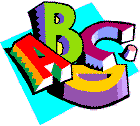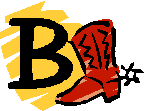

Teaching Vocabulary (2)
(by Craig Wealand)
1. Labelling A Diagram
Good if you can draw. If you’re like me and can’t, use stick figures, O.H.T.’s (overhead transparencies) or get a S to draw for you.
SS label parts of the body, a house, a car, an office etc.
For a more ‘interactive’ approach on ‘parts of the body’, get them to label each other in pairs using post-it notes.
2. Matching Definitions
A popular course book task is matching definitions of words to the words themselves.
This is more fun if you cut them out and put SS in groups to do it, or let them mingle around the class until they find their word/definition. Experts say the Kinetic approach is more memorable for the SS, but it will cost you at least five minutes of preparation time. You decide!
3. Guess The Word
T begins to dictate a word letter by letter until a S guesses the word and shouts ‘stop’.
The S then spells the word to the end.
I haven’t tried this one myself, maybe you could let me know if it’s any good?
4. The Best Sentence
Divide the SS into two teams. Write a word to be revised on the board. Each team has a secretary who writes a sentence constructed by the team and using the word on the board. The best sentence scores a point. The T’s word is final. Any disputes from a stroppy class can be dealt with quickly and painlessly by using a yellow card for the first dissension, and then a red one for disqualification (as in football).
5. Anagrams
I’m terrible with anagrams, but I have been told they can be used for revising, recycling and introducing bavoc.
6. Brainstorming
Is ‘brainstorming’ still a buzzword?
Put SS in groups. Tell them to think of as many words as possible in three minutes on the subject of………. (over to you!).
Appoint a group secretary to note down the words.
Who has the most?
14. Hangman
I’ve always found this too time consuming, but then again, I don’t teach kids.
A word is represented on the board by one dash for each letter, e.g. coffee
_ _ _ _ _ _ SS suggest letters (usually vowels first). If the letter doesn’t belong in the word, T writes letter on the board and draws one line of a hangman’s gallows. The SS have to guess the word before a man gets hanged. One guess counts as a line.
7. Team Vocab. Race
Divide the SS into groups of three, four or five depending on class size.
Appoint a group secretary.
Establish a vocab. category and number of words, e.g. ‘20 words connected to sport.’
Shout ‘go’ When a team claims to have finished, check their list for spelling and suitability of words without stopping the other groups. The first team to correctly collect a list of words scores one point for each word on the list. In this case 20.
Keep a running tally on the board.
Other ideas include:-
25 irregular verbs
10 prepositions
15 animals
20 phrasal verbs
15 ways to travel….etc.
8. Running Definition
Split SS into three or four groups, and write a scoring table on the board.
One team member from each team comes to the T who whispers a definition of a word to the group representatives. The reps. run back to their teams and repeat the definition. The team then writes the word they think is being defined on a slip of paper and the ‘runner’ returns to the T.
The first team to guess the word and write it correctly on paper scores a point and gets the definition of another word.
Note
:- Don’t wait for all the SS to be there before giving the next definition. It’s a race, so keep the pace up.Remember to rotate the messenger from time to time.
Holding back other messengers and general violence should be encouraged.
9. Half A Crossword
Popular in supplementary activity books for teachers.
Split the class in half. Give one side half of a crossword and the other side the other half.
In separate groups the SS check the meanings of the words they have, and also that they can define them and use the words in context.
Pair the students off and get them to define the words to each other
without looking at their partners half of the crossword. (‘Sit opposite each other and hold up your paper’.)Expressions such as ‘What’s 14 down’ and ‘Tell me 3 across again’ are helpful.
Note
:- Customising a crossword to revise recent vocab. can be time consuming.
10. Parts of Speech Bingo
I’m not one for labelling language, but brainstorm words from the SS under the following headings:-
Verb (past form)
Verb (infinitive form)
Verb (past participle form)
Noun (countable)
Noun (uncountable)
Adjective
Adverb
Preposition
Pronoun
Article………etc.
SS draw six squares on paper and choose six of the above ‘headings’, writing one heading in each square.
T calls out words and SS write them in the correct boxes.
The first student to fill all their boxes shouts ‘BINGO’, and calls the words back to the T to check.
Words could include:- from; gone; bought; took; bag; blue; pretty; been; the; slowly; mine; under; weather; with; lovely; traffic; beer; from; swam; flown; sandwich; flew; up; butter; oil; attractive; carefully; her.
11. Kim’s Game
Flash a dozen or so objects (under a sheet or tablecloth) or pictures of objects (on an O.H.P.) to the SS for a few seconds.
SS write down what they remember, and exchange their list with another S.
Show objects again while SS mark their partners list.
Works well with classroom things, ruler, stapler, scissors, board pen, pencil case etc.
12. What’s This Called In English?
Cut out pictures, stick them on card and on the other side write the word (and phonetic translation if you like).
SS mingle and hold up cards asking, “What’s this called in English?”
SS can’t sit down again unless they can name all the items on he cards.
13. Where Are You Going?
Using pictures of everyday objects to improvise a dialogue.
A Where are you going?
B To the _________
A Why?
B To get __________
E.g. If you flash a picture of aspirins, the dialogue should be:-
A Where are you going?
B To the chemist’s
A Why?
A To get some aspirins.
Flash a magazine and hope for…..
A Where are you going?
B To the newsagent’s
A Why?
B To get a magazine.
If you’ve found this list useful, please send us your classroom ideas. If they’re any good, we’ll put them on the web page and share them with the world!
Craig Wealand
La Mansión del Inglés. https://www.mansioningles.com
© Copyright La Mansión del Inglés C.B. - Todos los Derechos Reservados . -

¿Cómo puedo desactivar el bloqueo de anuncios en La Mansión del Inglés?



